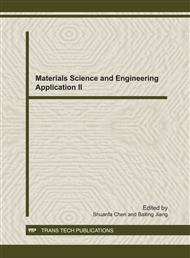p.170
p.174
p.180
p.184
p.190
p.195
p.201
p.207
p.213
Experimental Study on Anti-Shear Properties of Floor Heave Control Anchor of Deep Soft Rock
Abstract:
With the increase of Chinese mining depth, the deformation of deep soft rock is an increasingly serious problem, such as floor heave. The shear experiments of the different types of anchor were carried out. The results show that the anti-shear properties of the seamless anchor are higher than that of the seam anchor. It is significant for the anti-shear properties of anchor filled with different materials, like twisted steel, cement. The shear value of anchor inserted steel is the maximum, grouted one is the next and hollow one is the minimum. After steel installed, the anchor has better shear performance, it not only has greater anti-shear property, but has the secondary supported property because of the double-load peak during shear process. At the same time, the experiments also show that the anchor fixed into the floor in some angle, can effectively control the deformation of the floor heave of deep rock roadway. The studies can offer scientific basis for parameter design optimization of the anchor controlling the deformation of the floor heave.
Info:
Periodical:
Pages:
190-194
Citation:
Online since:
December 2011
Authors:
Keywords:
Price:
Сopyright:
© 2012 Trans Tech Publications Ltd. All Rights Reserved
Share:
Citation:


